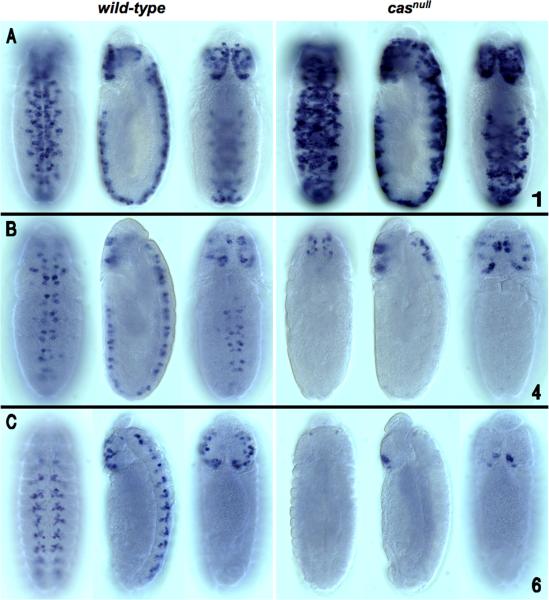Fig. 5.
Loss of cas function differentially affects cas CSC/reporter transgene expression in the developing embryonic CNS. Shown are ventral (left), lateral (center) and dorsal (right) views of individual transformant embryos from wild-type and casnull backgrounds (anterior up). CSC reporter/transgene expression was detected by whole-mount embryo in-situ mRNA hybridization using a digoxigenin labeled Gal4 riboprobe for the cas-1 reporter/transgene and a RFP riboprobe for the cas-4 and cas-6 reporter/transgenes. A) Compared to its wild-type expression dynamics, loss of cas function triggered heightened expression levels of the cas-1/reporter transgene throughout the CNS in addition to its expression in a greater number of NBs. B and C). cas-4 (stage 12 embryo) and cas-6 (stage 13 embryo) reporter/transgenes, respectively, exhibited diminished expression in a casnull background. For both constructs, loss of transgene expression was most significant in the ventral cord; cas-4/reporter transgene expression in the cephalic lobes was not significantly impaired, while for cas-6, reduced number of transgene expressing NBs was more significant in the subesophageal ganglion.

